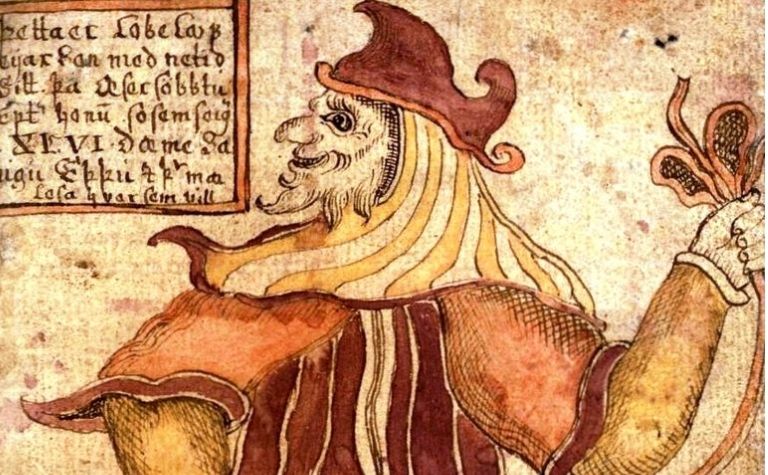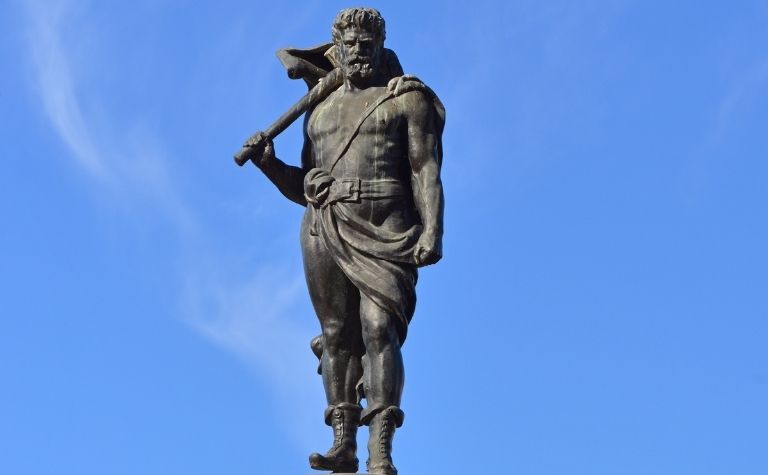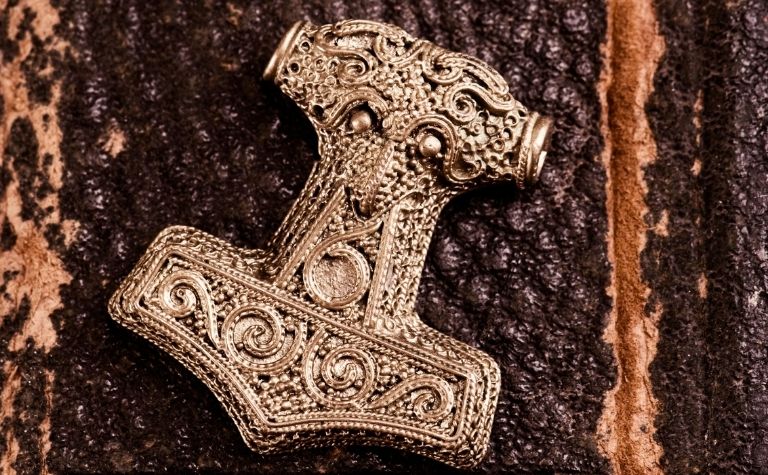When it comes to ancient mythology and deities, perhaps none are so well-known as the Greek gods.
Children are taught about these gods early in their lives, and many people know as much about Zeus, Hades, Poseidon, and all the rest as they do Jesus and the Christian God.
Norse mythology, though, is less well-known, so why did Marvel use those characters in its stories?
According to Marvel creator Stan Lee, “I chose the Norse gods because I felt people were less familiar with them than with [other] gods.” [1]
Using these gods in his comics was Lee’s way of teaching people about them. It also gave him more creative license since people didn’t already know their stories.
This article will outline which Norse mythology characters made it into the Marvel Cinematic Universe.
It will also discuss whether the Marvel movies accurately portray the ancient Norse tales and whether DC movies contain Norse mythology characters.
Also, see Valhalla vs Asgard: What’s the Difference? to learn more.

What Norse Mythology Characters Are in the MCU?
The following are the Norse mythology characters that appear in the Marvel Cinematic Universe (MCU):
- Thor
- Loki
- Odin
- Frigga (Frigg)
- Sif
- Hela (Hel)
- Heimdall (Heimdallr)
- Tyr
- Bor
- Eitri (Sindri)
- Fenrir (Fenris Wolf)
- Surtur (Sutr)
- Sleipnir
- The Valkyries
- The Frost Giants
- The Dark Elves
Some of these characters, such as Thor, Loki, Heimdall, Odin, and Hela, play a more significant role in the MCU than others.
For example, viewers only catch glimpses of Sleipnir, and though Fenrir appears in Thor: Ragnarok, his part is small and reveals none of his backstories. [2]
The list of gods, giants, villains, and other creatures that appear in the Marvel comics is much longer than those who appeared in the movies and shows and contains several lesser-known characters from the myths.
Also, see Norse Gods vs. Greek Gods: What’s the Difference? to learn more.

Does the MCU Depict Norse Mythology Accurately?
In some ways, the MCU depicts Norse mythology accurately, but in other ways, the MCU storylines are entirely fictionalized.
The relationship between Thor, Odin, and Loki is one prime example of the liberties Marvel took with the Norse myths.
The following two sections will expand on some (but certainly not all) of the things the MCU does correctly and the places where they diverged from the original myths completely.
Things Marvel Gets Right
Most of the Characters Are True to Form
The overall appearance and characteristics of most characters in the Marvel movies are pretty accurate. Odin has one eye, is serious, and keeps his own counsel.
Loki is chaotic, mischievous, and intelligent, although they didn’t quite get his appearance right. (In the myths, he’s described as fair, sometimes with blondish hair and sometimes red.)
Thor is big, strong, and generally a jovial person. He’s also a strong, powerful god and the protector of Asgard. He wields his hammer, Mjolnir, and can command lightning and thunder.
The Nine Realms, Yggdrasil, and the Bifrost
Although the MCU doesn’t show all nine of the nine realms, they talk about them and how they are joined to Yggdrasil, the world tree.
The Bifrost (rainbow bridge) is also straight from Norse mythology. It connects Asgard to Midgard (the world of men) and is guarded by the ever-watching Heimdall.
Loki Is a Magical Half-Giant
Another thing the MCU got right concerning Loki is that he is a half-giant with magical abilities.
According to Norse mythology, Loki’s father, Farbauti, was a giant. His mother, Laufey, may also have been a giant, but the source material is less clear about that.
Laufey was a goddess and a witch, and that’s where Loki likely inherited his magical abilities, the most impressive of which is shape-shifting. [3]
Loki shifts into all types of creatures in the myths, including a horse, salmon, fly, an elderly woman, and more.
In the Marvel movies, Loki shifts into Odin, Captain America, and other characters, although it’s important to note that some critics argue Loki is only casting illusions, not truly shapeshifting.
Also, see Does Loki Have Horns In Norse Mythology? to learn more.
Things Marvel Gets Wrong
Thor’s Hammer, Mjolnir
In the MCU, Thor is (almost) the only person who can pick up his hammer because of his “worthiness,” which means he’s a good person with good motives – a hero.
In Norse mythology, however, there are plenty of people who can pick up Mjolnir, including the dwarves that made it, Loki, a giant who steals it, and Thor’s sons.
Picking up the hammer has nothing to do with worthiness, either. It’s a simple matter of who is strong enough to do so.
The Relationship Between Odin, Thor, Loki, Hela, and Frigg
In the MCU, Odin and Frigg are the parents of Thor and the adoptive parents of Loki. Odin is also Hela’s father, making Hela Thor’s half-sister and Loki’s adoptive sister. [4]
However, in Norse mythology, not a single one of those things is entirely accurate.
Odin is Thor’s father, but Frigg is not his mother, and Loki isn’t related to any of the Aesir through blood or adoption. Instead, he’s Odin’s sworn blood brother.
Each of them promises he will help and never kill the other.
Hela, actually called Hel, is Loki’s daughter with the giantess Angrboda. Her only siblings are Jormungandr, the world serpent, and Fenrir, the giant wolf.
Thor’s Relationship with Jane Foster
This relationship is 100% Marvel-created, as Jane Foster never appeared in Norse mythology.
Instead, Thor is happily married to the golden-haired Sif, and together, the two of them have a daughter named Thrud. Thor also has two other sons and a stepson (Sif’s son, Ullr).
Also, see Are Loki and Thor Brothers In Norse Mythology? to learn more.

Does DC Have Characters from Norse Mythology?
DC movies don’t include Norse characters and settings, but the comics do, although not as often as Marvel.
The most notable instances of the Aesir in DC comics are a fight between Sandman and Thor, the Justice Leagues’ quest to stop Ragnarok, and when Loki, Odin, and Thor appear in the Dreaming.
A 2021 issue of Wonder Woman also features characters and locations from Norse mythology. This issue finds Wonder Woman in Valhalla with no memory of how she got there.
Some notable characters from Norse mythology that show up in this volume include:
- Thor
- Odin
- Ratatosk
- Nidhogg
There are also mentions of Vikings and the Valkyries, and the World Tree (Yggdrasil) even makes an appearance.
After reading it, many critics agree that DC’s depiction of Asgard and the creatures who live there is far more accurate than Marvel’s.
Conclusion
Stan Lee’s reason for using Norse gods may have been a simple whim, but the characters are now well-known and beloved parts of pop culture.
